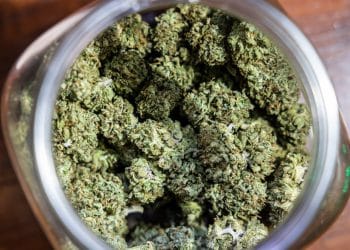A dab is a concentrated form of THC (tetrahydrocannabinol) and other cannabinoids from the cannabis plant. Dabs are made by extracting the cannabinoids from cannabis products using a solvent such as ethanol, butane or carbon dioxide. This produces an oil-like substance that is most often smoked in a glass pipe or vaped with e-cigarette like devices. The consumption of highly concentrated forms of THC has sparked some concern in the medical community and with mental health care professionals. The concern is that chronically ingesting highly concentrated forms of cannabinoids may lead to greater health risks, emotional problems, etc. Interestingly, there is very limited research on the potential dangers associated with dabbing and most of the statements and findings are speculative based on the idea that increased levels of THC will most likely produce an increased probability of negative effects for chronic users.
It is essentially impossible to separate physical and psychological effects of an activity because any psychological or emotional effect from the use of a substance will have a physiological basis, and any physical alteration that results from the use of a substance will produce emotional/psychological ramifications. Nonetheless, some speculated psychological consequences of chronic dabbing include:
- Research has suggested that the chronic consumption of concentrated forms of THC is associated with decreased sex hormone production in the brain, especially in maleswhich could result in emotional/psychological problems.1
- The use of higher concentrations of any drug on a regular basis leads to an increased risk for an individual to develop tolerance or physical dependence to the drug and for the individual to be diagnosed with a substance use disorder to the drug.2
- Other potential physical and psychological effects can occur due to toxic substances that are used in the production of dabs (e.g., butane). The substances may contribute to the development of emotional distress and even result in an increased risk for an individual to be diagnosed with a formal psychiatric/psychological disorder.3
It must be emphasized that specific data gleaned through formalized research studies that have investigated the long-term effects of dabbing are lacking and most of the above potential effects are conclusions based on research studies that have investigated the long-term effects of cannabinoid ingestion. More research is needed to ascertain what effects on the brain, if any, are the result of long-term dabbing and ingestion of concentrated cannabinoids.
References
- Iyer, P., Abadilla, K., & Dobs, A. (2015). Substances of Abuse and Their Hormonal Effects. In Textbook of Addiction Treatment: International Perspectives(pp. 1811-1830). Springer, Milano.
- American Psychiatric Association. (2013). The diagnostic and statistical manual of mental disorders-fifth edition. Washington DC, Author.
- Meehan-Atrash, J., Luo, W., & Strongin, R. M. (2017). Toxicant formation in dabbing: The terpene story. ACS Omega, 2(9), 6112-6117.












